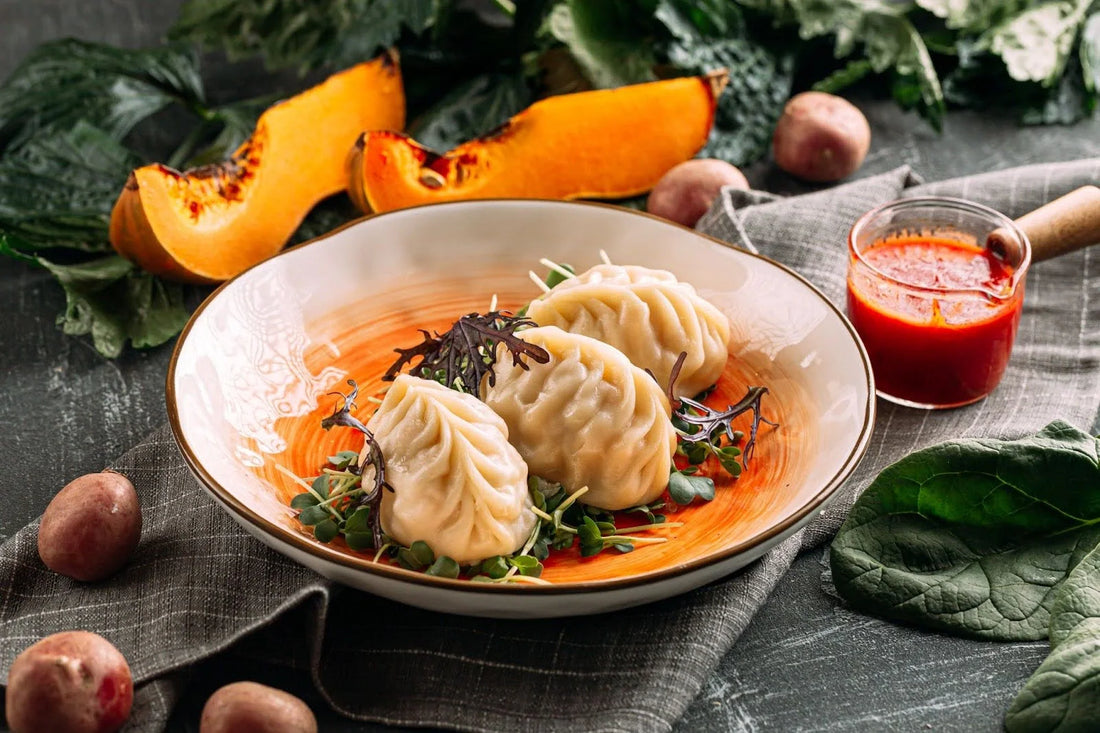
The Best Tips for Making Turkish Manti at Home
Teilen
Turkish cuisine offers countless treasures, but few dishes capture the heart quite like Turkish manti. These delicate, hand-folded dumplings represent more than just a meal – they embody generations of culinary tradition passed down through Turkish families. Known affectionately as "Turkish ravioli," manti Turkish has earned its place as one of Turkey's most cherished comfort foods.
The art of making Turkish mantis transforms any kitchen into a place of meditation and creativity. Each tiny dumpling requires patience and skill, yet the process brings families together in a way that few other dishes can match. Whether served during special celebrations or enjoyed as a weekend treat, manti represents the soul of Turkish hospitality.
Regional variations across Turkey showcase the versatility of this beloved dish. While the classic version features seasoned ground lamb or beef, some regions prefer different spice blends, alternative fillings, or unique serving methods. This diversity makes manti not just a recipe, but a cultural experience that connects people to Turkish heritage.

What Makes Turkish Manti Special?
Turkish manti stands apart from similar dumplings found in other cuisines due to its fragile dough and distinctive serving style. The combination of tender pasta, flavorful meat filling, creamy yogurt sauce, and aromatic spiced butter creates a symphony of textures and tastes that defines authentic Turkish cooking.
A Brief History of Manti
The origins of manti trace back centuries, with historical connections to Central Asian nomadic tribes who brought their dumpling-making traditions westward. As these communities settled in Anatolia, they adapted their recipes using local ingredients and techniques. Over time, Turkish mantis evolved into the refined dish known today, with each region adding its own signature touches.
Turkish families have traditionally gathered to make manti together, especially during the winter months when the lengthy preparation process becomes a social activity. Grandmothers would teach younger generations the proper folding techniques, ensuring that knowledge passed from one generation to the next.
Why Turkish Manti is Unique
What sets manti türkisch apart from other dumplings lies in several key characteristics:
- Ultra-thin dough: The pasta dough rolls incredibly thin, creating delicate pockets that don't overpower the filling
- Precise folding technique: Each dumpling requires careful hand-folding to achieve the traditional square shape
- Dual sauce system: The combination of garlic yogurt sauce and spiced butter provides contrasting flavors and temperatures
- Size consistency: Traditional manti are remarkably small, with experienced cooks making dozens from a single portion of dough
Essential Ingredients for Authentic Turkish Manti
Creating an authentic Turkish mantis recipe requires carefully selected ingredients that work together to produce the classic flavors Turkish families have enjoyed for generations.
The Dough
The foundation of exceptional manti begins with precise yet straightforward dough preparation:
- High-quality all-purpose flour: Forms the structure of each delicate dumpling wrapper
- Fresh eggs: Provide richness and help bind the dough while adding golden color
- Warm water: Helps create the proper dough consistency for easy rolling
- Salt: Enhances flavor and strengthens the gluten structure
- Olive oil: Adds subtle flavor and prevents the dough from becoming too stiff
The Filling

Traditional Turkish manti filling combines:
- Ground lamb or beef: Lamb provides the most authentic flavor, though meat works well, too
- Finely minced onions: Add moisture and sweet flavor that complements the meat
- Fresh parsley: Brings brightness and color to the filling mixture
- Black pepper and salt: Essential seasonings that enhance the meat's natural flavors
- Optional spices: Some regions add cumin, paprika, or allspice for additional depth
The Sauce
The signature sauces that make manti türkisch truly special include:
- Thick Greek yogurt: Provides the creamy, tangy base for the primary sauce
- Fresh garlic: Minced finely and mixed with yogurt for the classic garlic sauce
- Butter: High-quality butter forms the base for the aromatic spiced topping
- Paprika and red pepper flakes: Create the characteristic red-colored spiced butter
- Fresh herbs: Dried mint or fresh dill often garnish the finished dish
Step-by-Step Guide to Making Turkish Manti at Home
Successfully preparing the Turkish mantis recipe at home requires patience and attention to detail, but the results justify every minute spent in the kitchen.
Preparing the Dough
Begin by combining flour and salt in a large mixing bowl. Create a well in the center and add beaten eggs along with warm water and olive oil. Mix gradually, incorporating flour from the edges until a shaggy dough forms. Knead the mixture on a floured surface for approximately ten minutes until the dough becomes smooth and elastic.
Allow the dough to rest covered for at least thirty minutes. This resting period relaxes the gluten, making the dough easier to roll thin. Properly rested dough will stretch without tearing when rolled to the paper-thin consistency required for authentic manti.
Filling the Manti
Divide the rested dough into manageable portions and roll each section as thin as possible on a well-floured surface. The dough should be nearly transparent when properly rolled. Cut the rolled dough into small squares, approximately one inch on each side.
Place a small amount of filling in the center of each square – less than a teaspoon per dumpling. The filling should contain finely minced meat mixed with onions, parsley, salt, and pepper. Bring the corners of each square together and pinch tightly to seal, creating the characteristic manti shape.
Cooking the Manti
Arrange the filled dumplings on a lightly oiled baking sheet, ensuring they don't touch each other. Brush the tops with melted butter or oil to prevent drying during baking. Bake in a preheated oven at 400°F (200°C) for approximately fifteen to twenty minutes until the tops turn golden brown.
Alternatively, steam the manti in a traditional steamer for about twenty minutes, or boil them gently in salted water until they float to the surface. Each cooking method produces slightly different textures, allowing cooks to choose their preferred approach.
The Perfect Turkish Manti Sauce

The sauce combination distinguishes excellent manti from ordinary dumplings, creating the complex flavor profile that makes Turkish mantis so memorable.
Making the Yogurt-Garlic Sauce
Start with thick, high-quality yogurt at room temperature to prevent curdling when mixed. Mince fresh garlic cloves very finely and mix thoroughly into the yogurt along with a pinch of salt. The sauce should have a smooth consistency and balanced garlic flavor that complements rather than overwhelms the delicate dumplings.
Allow the yogurt sauce to sit for at least fifteen minutes before serving, giving the garlic time to mellow and infuse throughout the mixture. Some cooks prefer adding a small amount of lemon juice for extra tanginess.
Preparing the Spiced Butter Sauce
Heat butter gently in a small saucepan until it begins to foam and turn golden. Remove from heat and immediately add paprika and red pepper flakes, swirling to combine. The hot butter will bloom the spices, creating an aromatic and flavorful topping.
The spiced butter should have a vibrant red color and a fragrant aroma. Pour this mixture over the plated manti just before serving to ensure maximum flavor impact and visual appeal.
Creating authentic manti türkisch at home requires dedication and practice, but the satisfaction of serving this traditional Turkish treasure to family and friends makes every effort worthwhile. Start with quality ingredients, take time with each step, and don't be discouraged if the first attempt doesn't achieve perfection. Like any traditional dish, mastering the Turkish mantis recipe improves with experience and patience.
Experiment with different regional variations, try alternative fillings like cheese or vegetables, and adjust the sauce combinations to suit personal preferences. The beauty of manti lies not just in following tradition, but in making it a personal expression of Turkish culinary heritage that brings joy to every table where it's served.

